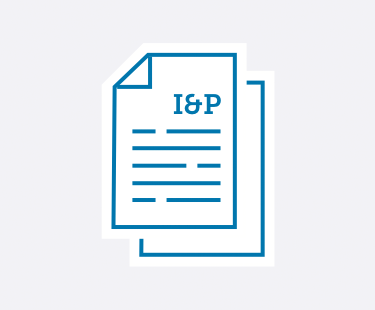

Learn practical strategies to handle emerging trends and leadership challenges in private schools.
No matter if you’re a School Head, Admission Director, Development Director, Board member, or any other private school administrator—Ideas & Perspectives®, ISM’s premier private school publication, has strategic solutions for the pervasive problems you face.
- Tuition not keeping pace with your expenses? In I&P, explore how to use strategic financial planning to create your budget and appropriately adjust your tuition.
- Enrollment dropping off? Discover how to implement the right admission and enrollment management strategies that engage your community—and fill your classrooms.
- Trouble retaining teachers? Learn how you can best support your teachers using ISM’s Comprehensive Faculty Development framework. Your faculty members will become more enthusiastic about their roles—which ultimately improves student outcomes.
- Fundraising campaigns not as successful as you’d hoped? Implement ISM’s practical advice and guidance to build a thriving annual fund, construct an effective capital campaign, and secure major donors—no matter your community size or location.
- Not sure how to provide professional development—for you and your staff? Learn ways to develop and fund a successful professional development strategy. You can improve teacher-centered satisfaction and growth, which in turn strengthens student-centered learning.
- Problematic schedule? You can master the challenges of scheduling with the help of ISM’s practical advice, based on our experience with hundreds of schools and our time-tested theories.
- And so much more.
I&P has shared targeted research, up-to-date insight, and sound theory with school leaders since 1975. More than 8,500 private school decision-makers find the answers to their schools’ administrative and governance matters in our advisory letter. We give you the strategic answers you need.
As an ISM Silver or Gold member, you not only receive issues online and in print 10 times a year, but you have access to 900+ articles in our web archive. Need help? It’s at your fingertips! Learn more and sign up for ISM's membership here.
Search
See the articles from our latest issue of Ideas & Perspectives.
Your School's Statement on Diversity
Volume 38 No. 13 // October 16, 2013
To establish institutional commitment to—and authenticity about—diversity, be sure to clarify and formalize the school's "case" by crafting a Statement on Diversity. This statement complements your school mission statement, especially by providing language to describe the kind of human community that distinguishes your school and supports its educational purposes.
1. Already a member? Click here to login.
2. Not a member? Click here to become a member.
3. Not sure? We'll help you figure it out.
Teaching as Leadership: ISM Research
Volume 38 No. 13 // October 16, 2013
In a recent article on faculty as leaders, ISM identified four actions that faculty leaders take—they assume control of their own growth and renewal, take control of their own curricula and assessment, use time to define and improve their work, and strive to be paid according to the merit of the work they do. This article takes another step further by examining the qualities of leadership and the qualities of teaching to see how the former might be enhanced.
1. Already a member? Click here to login.
2. Not a member? Click here to become a member.
3. Not sure? We'll help you figure it out.
Tuition Discounts and Your School's Sustainability
Volume 38 No. 13 // October 16, 2013
Schools use a variety of discount strategies, including tuition remission, sibling discounts, and full-pay discounts. ISM refers to these as category discounts, meaning that, because an enrolling student falls into a predetermined category, the discount is automatically awarded. This strategy can needlessly reduce net revenue per student and is a practice that should be reconsidered by most independent school leaders.
1. Already a member? Click here to login.
2. Not a member? Click here to become a member.
3. Not sure? We'll help you figure it out.
ISM's Relational Coaching Model
Volume 38 No. 12 // September 18, 2013
Coaching is a career-long conversation between teachers and their individual coaches about the high-order professional/technical understandings and behaviors that collectively become difference-makers in the lives of students. In a previous article on distributed leadership, ISM identified coaching as a key skill for school leaders. Coaching is intrinsic to faculty evaluation as we have described it in ISM’s Comprehensive Faculty Development Model™. Coaching is also clearly implied for School Heads in the School Leadership Points of Emphasis. In this article, we outline the ISM Relational Coaching Model. While coaching is a form of communication, it is a specialized subset that requires training and practice.
1. Already a member? Click here to login.
2. Not a member? Click here to become a member.
3. Not sure? We'll help you figure it out.
Defining Diversity in Your School’s Culture: Implications for Planning
Volume 38 No. 12 // September 18, 2013
We want more diversity. This phrase is often uttered during the brainstorming stages of a private-independent school’s strategic planning sessions, followed by nods of assent from other Trustees. Much informal agreement may be expressed on this general proposition; however, planning problems can ensue if key steps are not taken. Several years in the future, planners or constituents might say, “You know, we wanted more diversity but we haven’t done much about it.” A Board of Trustees or other group that wants to include “more diversity” as a planning item should consider the following three questions.
1. Already a member? Click here to login.
2. Not a member? Click here to become a member.
3. Not sure? We'll help you figure it out.
Tuition Increases and Faculty Compensation
Volume 38 No. 12 // September 18, 2013
The seemingly dramatic increase in private school tuition between 1990 and 2010 is largely accounted for by the increase in faculty compensation over the same period. It seems that the competitive market for excellent faculty is dictated largely by public schools—not surprising, considering they employ the largest number of teachers.
1. Already a member? Click here to login.
2. Not a member? Click here to become a member.
3. Not sure? We'll help you figure it out.
Appropriate Tuition Adjustment: Recasting Financial Figures, 2013-14
Volume 38 No. 11 // August 22, 2013
Each fall, ISM publishes a set of conversion factors to facilitate recasting previous tuitions into current dollars. (See the accompanying table.) We continue to use the Urban Consumer Price Index (CPI-U).1 However, we also realize the CPI-U does not completely reflect expenditures in private-independent schools; it can only serve as a base figure. There are compelling arguments for adjusting your tuition at a rate 2% above the overall inflation rate.2 The CPI has a built-in “productivity factor.” It assumes the workforce is increasingly productive as computers, streamlined mechanical devices, and other laborsaving developments provide greater output with fewer personnel. The more efficient a business becomes, the more the business can stabilize or reduce the effects of inflation.
1. Already a member? Click here to login.
2. Not a member? Click here to become a member.
3. Not sure? We'll help you figure it out.
Research Report: Faculty Culture Profile II and Student Experience Profile II, Spring 2012 and Spring 2013 Cumulative Data
Volume 38 No. 11 // August 22, 2013
ISM published its Student Experience Study (SES) outcomes in January 2012, and published related articles in Ideas & Perspectives throughout the spring. Among the features in the report were a revised Faculty Culture Profile—ISM’s long-standing measure of the quality of a school’s faculty culture—and a revised Student Culture Profile, along with the study’s statistical findings and an instrument for use as part of any school’s approach to faculty evaluation, the Characteristics of Professional Excellence II.
1. Already a member? Click here to login.
2. Not a member? Click here to become a member.
3. Not sure? We'll help you figure it out.
Reduce Budget Compromises: Strategies for Maximizing Income
Volume 38 No. 9 // August 7, 2013
As your school’s Board and Management Team search for effective ways to maximize income and ensure financial stability, ask these 11 questions. (Note the following elements are exactly the items to consider in the quadrennial strategic planning sessions—not just annually. In fact, if the items are not considered in strategic planning, some of them will be difficult or impossible to implement year-by-year.)
1. Already a member? Click here to login.
2. Not a member? Click here to become a member.
3. Not sure? We'll help you figure it out.
Faculty Compensation, 2012–13: Day School Salaries
Volume 38 No. 10 // August 7, 2013
In our continuing research concerning the competition for quality, mission-appropriate teachers for private-independent schools, ISM annually surveys a random sample of I&P subscriber schools concerning compensation for faculty and administrators. This year, 199 schools responded to the survey. This article focuses on the survey results regarding the salaries of day school teachers. A competitive faculty salary structure is critical in a school’s ability to sustain programmatic excellence over time. Competitive salaries enable you to retain members of your faculty and hire new teachers. Consider the following results of our survey—and where your school falls in the scope of compensation variables.
1. Already a member? Click here to login.
2. Not a member? Click here to become a member.
3. Not sure? We'll help you figure it out.


